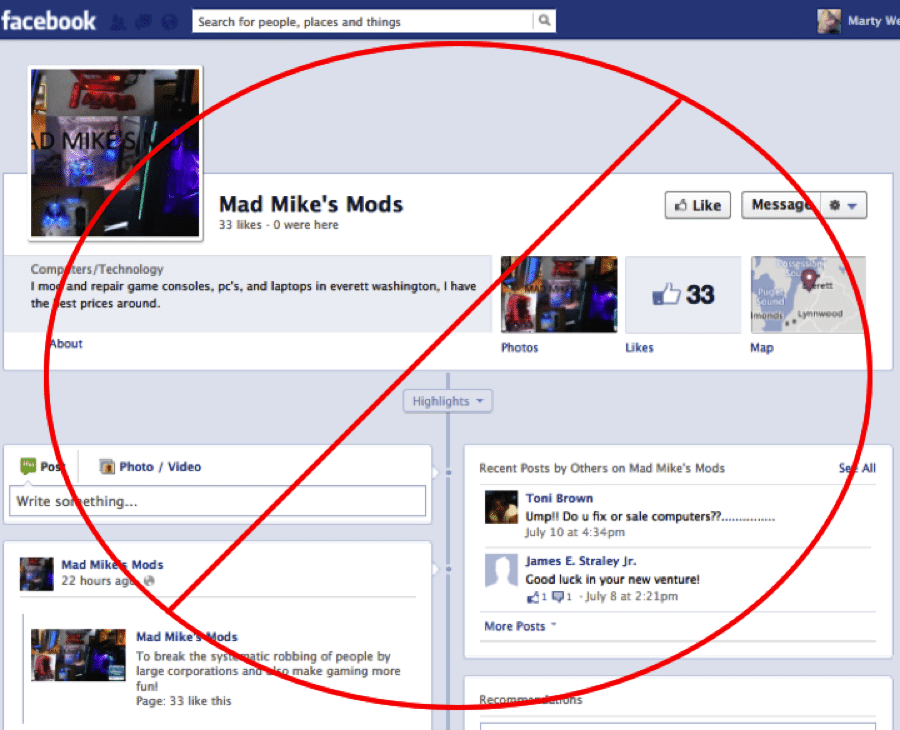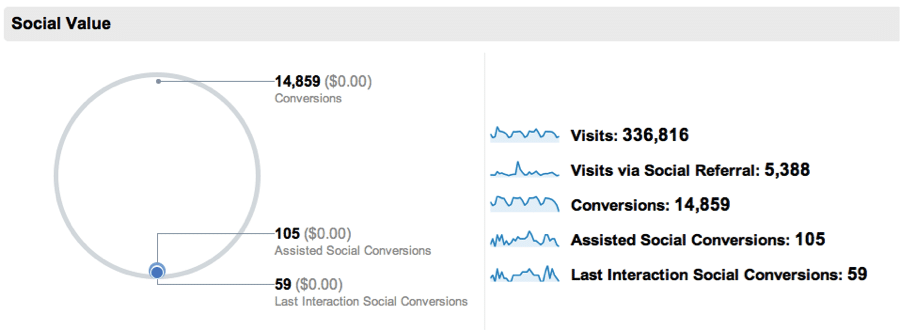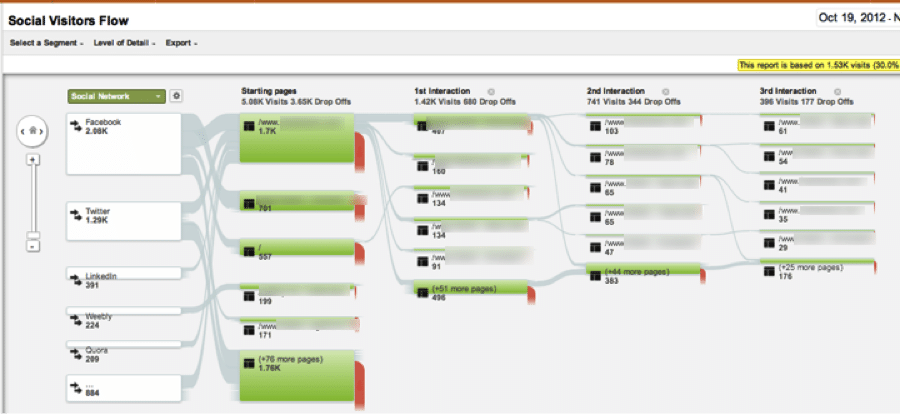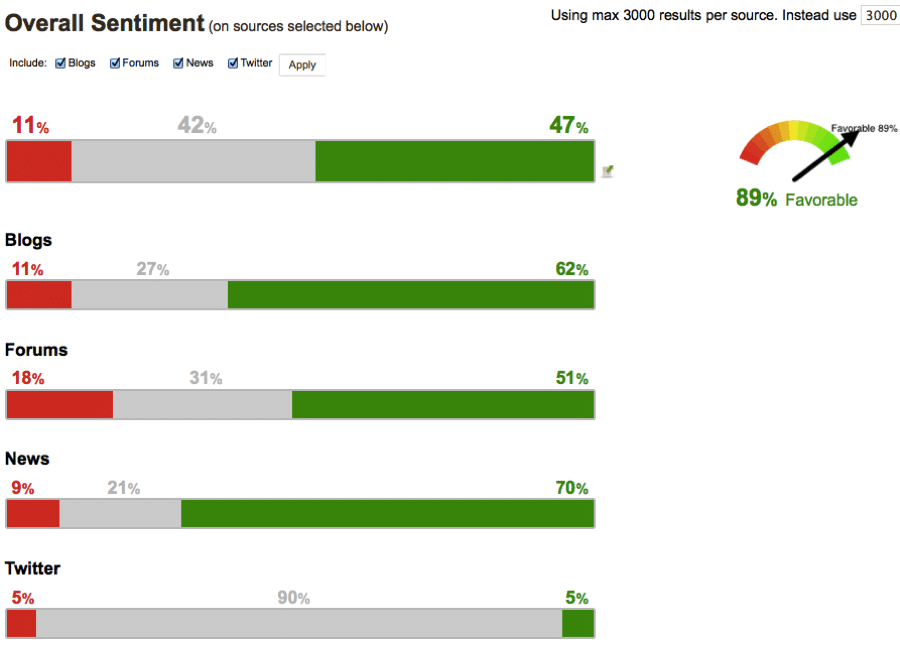At the SES ClickZ social analytics training in Chicago last week, we asked the audience to raise hands if their companies are active in social. Nearly everyone in the room responded in the affirmative. We next polled how many attendees actually make money they can reasonably attribute to social media marketing. A couple of marketers tentatively raised their hands. The rest slowly shook their heads, “No,” and smiled a wry smile. The third question we asked was, “What ROI goals have you set for social?” The audience looked at Merry and I as if we were from Mars.
This disconnect is common. Most social media marketing we see narrowly focuses on engagement in and between channels. Sure, engagement is a virtuous objective. Interacting with a brand’s audience lifts up branding efforts, enhances customer support, fosters product affinity, connects and assists, or outright causes sales. However, unless marketers can correlate buzz in and between channels over time to such objectives, engagement for engagement’s sake is fool’s gold.
The first step of realizing ROI from social media marketing is setting the right goals, informed by reality. Here’s AIMCLEAR‘s master list of social KPIs (key performance indicators), which we use as a starting point for goal-setting with clients. We offer it as a worksheet for work internally and/or with clients. Use it to challenge yourself to be more informed, diverse, and savvy in defining the expected outcome of social media marketing efforts. The KPIs range from minimal (the least a brand has to do) to hard-core revenue expectations.
AIMCLEAR® Social KPI Goals Worksheet
Credible density: A brand needs to have a designed page with a minimal amount of activity, postings, and fans to “look” like a brand. Even if there is no other goal, make your social media profiles look as if there is somebody home. Credible density, looking like a brand to users who discover your social profiles, is the least any brand should do. Social profiles that look like they were baked in somebody’s garage can hurt your company if potential customers stumble upon the dorky business page. Invest just enough to look and feel like a brand. The screen cap of Mad Mike’s Mods (below) does not do very much to reinforce my perception that this is a real business. Filling out and optimizing social profiles completely aids in brand discoverability within each channel and mainstream SERP (search engine results page).
Weak FB Profile
Paid and organic social traffic to client-owned websites leading to sales, attributable over time:  This is our number one goal most of the time because most commerce it’s all about leads and sales. Google Analytics provides useful reports in the “Social” analytics tab. Here are two reports laying out social conversion and assisted social conversion. Most social media marketers should be looking at this report every day.
GA Social Value Report
GA Assisted Vs. Last Interaction Analysis
Social visitors flow is the precursor to attributable social media conversion. It’s hard to convert users on your website from social sources if users don’t come from social in the first place and/or leave right after they arrive. Make sure you’re sending users from social media to areas of your website. Often, this is done with content. Below is a Google Analytics Social Visitors Flow report. Use it to see how visitors move from arrival through deeper site visits. It’s a great diagnostic report for understanding how visitors move throughout your site towards KPI objectives, at the individual page level.
GA Social Flow Report
Search interest, Trends: A wonderfully effective place to measure branding, and therefore non-sales social media impact, is by watching search interest over time. The chart below plots peaks and valleys for three social media communities (Ning, Quora, and StumbleUpon). Remember that strings with negative keywords are useful for filtering Google (search interest) Trends– example: “Ning -li -nong -zhang-nang -badminton – gan –an.”  Google Trends are cool because they correlate search interest to news events, denoted by the lettered indices. It’s great for seeing how PR and other news generating events affect interest. If you’re all about branding in social, this report is for you!
Google Trends Report
Enhanced SEO prominence in Google by way authorship: SEO has become much more about getting optimized content in front of a qualified users’ set. Authorship, making sure to connect the dots between Google+, Circles “Follows,” and content on your site is a crucial component. Users often see a picture of somebody they know or have heard of in the SERPs and it feels like a personal recommendations.
Example Of Authorship
Client sales teams’ relationships with customers in social channels: Â Try setting a goal surrounding your sales team’s industry relationships. Does your team have actual relationships in LinkedIn? Are they engaged in magnanimous dialogs amongst key psychographics, groups, and LI Answers? Set such networking goals as social KPIs, past engagement for engagement’s sake.
Look beyond the statistics and measure your team’s participation with third party synchronistic content publishers and players in YouTube, Blogs, Forums, Twitter, Facebook walls and other channels. If you are going to play, play to connect and make real relationships that will ultimately serve business objectives.
S.O.P. Categorization Of Friends / Targeted Demo / Psychographics: Community building effort is anchored by dogged determination to place focused fans in community by intentionally targeted psychographics. Getting likes can’t be willy-nilly. Random fans won’t be nearly as useful for content marketing. The objective is to place a confirmed percentage of our target psychographic segments in-community. This task, though seemingly simple, is daunting for many and a lot of hard work for most. The objective is to place a confirmed percentage of our target psychographic segments, in-community, for loyalty marketing. Read more about the concepts and how to build a Community Focus Report.
Sysomos MAP Sentiment Analysis
Here are additional social media KPIs to measure, in order quantify your company’s marketing goals:
- SEO prominence: Do your social media profiles show up in Google and Bing organic SERPs?
- Measurable participation in mainstream threads surrounding key topics. Is your brand participating in conversations that matter?
- Engagement on site(s) from combined social, measured by page views, loyalty, and time on site, compared to search. When users come to your website, how do they perform?
- Engagement in classic promotions from any social channel. Does your brand run promotions that drive awareness, friendship, and ultimately traffic to your website?
- Amplification of deep, thought leadership content. Does social support your content strategy?
- Successfully crowd sourcing anything at scale (input to company, naming things, media in OTHER channels influenced by crowd sourcing). Do you ask your audience for input?
- Enrollment of existing customers in social channels. From Facebook Ads Customer Audiences to driving users to social to your website, do your existing customers also interact in-social? Beware! This is a double-edge sword. Moving customers to social facilitates marketing to their friends. It also makes your customers vulnerable to other brand’s poaching.
- Ownership of a message testing crucible to advise other channels
- Acquiring email addresses: Taking the fans out of social. We like this one the best.
- Intra-channel engagement, Measuring in-social engagement: Engagement for engagement’s sake is what most companies seem to call social media. This is last on the list for a reason.
All over the world, companies are struggling to define what social media success means. As an industry, we’ve been social for years already. At first, lots of marketers dove headfirst into social, hopeful for revenue. Sure, there were fantastic stories of accomplishment and sales-valor, but ROI for many was ambiguous. Use these KPIs as a starting point for your own exploration.
Header image ©Fotolia, stockshoppe
















